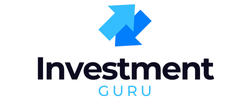When small businesses need funding, two of the most common options are a business line of credit and a term loan. At first glance, both provide access to capital, but the way they work—and the situations they’re best for—are very different. Knowing which one fits your business can save you money, reduce financial stress, and give you the flexibility to grow on your own terms.
A term loan is straightforward: you borrow a lump sum upfront and pay it back over a set period with fixed or variable payments. It’s a good fit for large, one-time expenses like buying equipment, renovating a space, or expanding operations. Since you know exactly how much you’ll repay each month, a term loan can make budgeting more predictable.
A business line of credit, on the other hand, works more like a credit card. You’re approved for a set credit limit, but you only pay interest on the amount you actually use. This flexibility makes it a great tool for managing cash flow gaps, covering seasonal expenses, or handling unexpected costs. Instead of locking yourself into a fixed repayment plan, you can draw funds as needed and pay them back at your own pace.
Of course, each option comes with trade-offs. Term loans usually offer larger sums and sometimes lower interest rates, but they require you to take on the full debt whether you use it all or not. Lines of credit give flexibility but often have smaller limits, variable rates, and annual renewal requirements.
In this article, we’ll break down the differences between small business lines of credit and term loans in plain language. By the end, you’ll know which financing option makes the most sense depending on your business goals, cash flow needs, and credit profile.
Table of Contents
Understanding the Basics: What is a Line of Credit and What is a Term Loan?
Before diving into the comparison of small business line of credit vs term loan, let’s break down how each works.
What is a Small Business Line of Credit?
A business line of credit (LOC) functions like a credit card. You get approved for a set credit limit, and you can draw funds as needed. You only pay interest on the money you use, not the total available credit. Once you repay, those funds become available again. This revolving credit offers flexibility that is ideal for covering uneven cash flow, emergency expenses, or short-term needs.
What is a Term Loan?
A term loan is a lump sum loan repaid over a fixed term with a set interest rate. Typically used for long-term investments—like expanding operations, purchasing equipment, or hiring staff—a term loan requires predictable scheduled monthly payments until the balance is paid in full.
Small Business Line of Credit vs Term Loan: Key Differences
At first glance, both products provide funding. However, their mechanics and benefits diverge significantly. Review the major factors in the table below:
| Factor | Small Business Line of Credit | Term Loan |
|---|---|---|
| Structure | Revolving credit line (draw, repay, reuse) | One-time lump sum disbursement |
| Best For | Short-term expenses, working capital, emergencies | Long-term projects, large investments, expansion |
| Repayment | Pay interest only on what you borrow; flexible | Fixed monthly payments with principal + interest |
| Credit Limit | Usually smaller amounts (e.g., $10k – $250k) | Larger amounts possible (e.g., $50k – $1M+) |
| Fees | May include draw fees, maintenance fees | Origination fees, prepayment penalties possible |
Advantages of a Small Business Line of Credit
- Flexibility: Borrow only when needed; ideal for unpredictable expenses.
- Revolving structure: Funds become available again after repayment.
- Cash flow management: Smooths seasonal revenue dips or time-sensitive supplier payments.
- Interest savings: Pay interest only on what you draw.
Advantages of a Term Loan
- Large investment funding: Ideal for capital expenditures like new equipment, offices, or acquisitions.
- Predictability: Fixed repayment schedule helps with budgeting and planning.
- Potentially lower rates: For well-qualified borrowers, interest rates may be lower than revolving lines.
- Building business credit: Successfully repaying a term loan enhances your company’s credit profile.
When Should You Choose a Line of Credit?
A line of credit is smart when your business experiences recurring or unpredictable short-term funding needs. Retailers with seasonal sales cycles, for example, may need a credit line to purchase holiday inventory months before sales revenue rolls in. Construction companies often rely on lines to pay for upfront project costs until clients settle invoices.
When Should You Choose a Term Loan?
Use a term loan when your business is investing in growth initiatives with long-term payoffs. That could include renovating your store, developing a new product, or expanding your team. Term loans are better suited for predictable, structured uses where the return on investment unfolds over several years.

Application Process and Requirements
Applying for either financing product requires financial transparency, but the documentation, timeline, and underwriting can differ.
Line of Credit Requirements
To set up a line of credit, lenders typically assess your business’s cash flow, bank account activity, and overall revenue. Many banks prefer at least 2 years in business, though online lenders may offer lines to newer companies. Requirements may include:
- Business bank statements
- Tax returns
- Profit and loss statements
- Credit score checks
Term Loan Requirements
For a term loan, especially larger sums, lenders will want robust documentation that proves your business’s ability to handle long-term repayment. Documentation usually includes:
- Detailed business plan with ROI projections
- 3+ years of financial statements
- Collateral in some cases
- Personal and business credit history
Costs and Interest Rates
The true cost of borrowing is one of the most important considerations in the small business line of credit vs term loan debate. Rates vary widely depending on creditworthiness, lender type, loan amount, and repayment terms.
For updated rate trends and details on loan mechanics, references such as Investopedia’s article on lines of credit and Federal Reserve small business loan data are excellent resources.
Digital Lenders vs Traditional Banks
Both term loans and lines of credit can be obtained through either traditional banks or modern fintech lenders. Banks may offer lower rates but require stricter qualifications and longer processing times. Online lenders often approve lines and loans faster, albeit at higher interest costs. Depending on your urgency and credit health, one path may be better than the other.

Real-World Examples
Consider two scenarios:
- Scenario A: A bakery uses a line of credit to buy flour and supplies ahead of holiday peaks, then repays within 60 days once sales pick up. This prevents stockouts without straining cash reserves.
- Scenario B: A manufacturing company wants to buy a $250,000 piece of equipment to scale production. A 5-year term loan with a consistent monthly payment makes sense, as it aligns with the long-term benefit of the asset.
How to Decide Between a Small Business Line of Credit vs Term Loan
Use the following decision framework:
- If you need ongoing flexibility and repayment can be structured around short-term revenue cycles, choose a line of credit.
- If you have a specific, one-time expense with long-term payoff, choose a term loan.
- Consider closure fees, origination fees, and potential penalties. Always compare offers before committing.
Tip: Always request a breakdown of the Annual Percentage Rate (APR) from lenders to assess the true cost of borrowing—don’t just look at the headline interest rate.
FAQs: Small Business Line of Credit vs Term Loan
1. Which is easier to qualify for, a line of credit or a term loan?
Lines of credit from online lenders may be easier to qualify for, though they often come at higher interest rates.
2. Can a business have both a line of credit and a term loan?
Yes, many businesses use both. For example, a term loan for expansion and a line of credit for day-to-day working capital.
3. How quickly can I access funds with a line of credit?
Once approved, funds are often available instantly or within 1–2 business days.
4. Are interest rates higher on credit lines than loans?
Typically yes, but not always. Rates depend on creditworthiness, lender type, and overall loan amount.
5. Do term loans require collateral?
Some do, especially larger loans from banks. Online lenders may offer unsecured options at higher rates.
6. What fees should I watch out for?
Look out for draw fees, maintenance fees, origination charges, and prepayment penalties.
7. Can I improve my approval chances?
Yes. Strengthening your business credit profile, ensuring steady cash flow, and preparing financial statements are crucial.
8. Will these loans impact my personal credit?
They can. Many lenders check personal credit scores, and defaults may show up on personal credit reports.
9. Which option builds more business credit history?
Both report payment activity, but term loans typically have more weight since they’re longer and structured.
10. Should startups use lines of credit or term loans?
Startups often struggle to qualify for large term loans due to limited history, so credit lines or alternative financing may be more accessible early on.
Conclusion: Making the Smart Choice
The decision between a small business line of credit vs term loan should align with your business goals, funding needs, and repayment capacity. A line of credit offers flexible access for short-term needs, while a term loan provides structured financing for long-term growth. Before choosing, evaluate your cash flow, compare lender terms, and plan repayment carefully. The right financing tool can mean the difference between steady growth and stalled potential—start your comparison today and secure the capital your business deserves.


